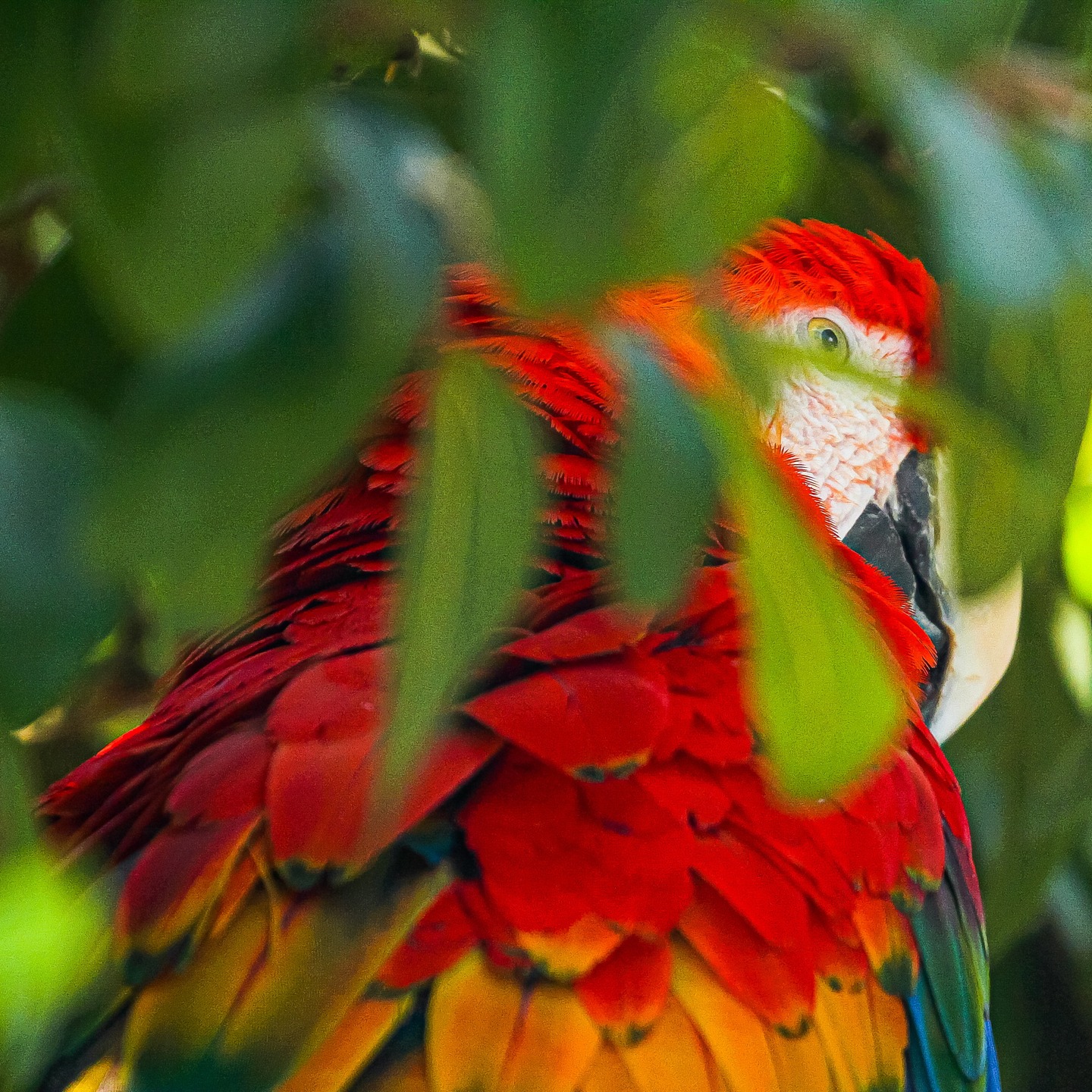- Understanding camouflage and its significance in nature.
- The scarlet macaw’s use of disruptive coloration.
- How flock behavior enhances survival.
- The role of conservation in protecting the scarlet macaw.
- The importance of biodiversity and habitat preservation for wildlife survival.
Camouflage is a survival strategy employed by various species to blend into their environment and avoid detection by predators or prey. In nature, camouflage can take many forms, such as mimicry, coloration, and behavioral adaptations. For the scarlet macaw, an exquisite bird native to the rainforests of Central and South America, camouflage is less about blending in and more about confusing predators through a technique known as disruptive coloration.
Disruptive coloration is a form of camouflage that utilizes contrasting patterns and colors to break up the outline of an animal. In the case of the scarlet macaw, their vibrant plumage—composed of striking reds, blues, and yellows—does not seem like it would aid in concealment. Yet, in the dappled light of the rainforest canopy, these bright colors can be quite effective at confusing and disorienting predators. When seen among the myriad colors of the forest, a single macaw might not blend perfectly, but as a group, the thronging mass of colors creates a visual cacophony that makes it difficult for predators, such as large birds of prey or even big cats, to single out an individual bird for attack.
Flock behavior enhances this survival strategy. Scarlet macaws often gather in large groups, and the collective movement of hundreds of birds confuses predators. This strategy not only helps in avoiding predation but also aids in the social bonds within the species. The noisy, social nature of these birds enhances the protective aspect of disruptive coloration. The confusion created by a bursting flock flapping their vibrant wings can be a formidable deterrent to predators attempting to focus on a single target.
Despite their effective natural strategies, scarlet macaws face threats beyond predation. Habitat destruction due to deforestation and the illegal pet trade pose significant risks to their populations. These threats underscore the importance of conservation efforts. Conservation programs focus on protecting natural habitats and enforcing legislation against poaching. Organizations dedicated to wildlife preservation work tirelessly to safeguard the environments that these birds rely on, as well as educate local communities on sustainable practices.
Biodiversity and habitat preservation are critical for the survival of the scarlet macaw and countless other species. Healthy ecosystems provide the resources needed for wildlife to thrive, such as food, shelter, and breeding grounds. Maintaining biological diversity ensures ecosystems remain resilient and adaptable to changes. Conservation efforts that emphasize habitat protection contribute not only to the survival of the scarlet macaw but also to the broader stability of the environment.
Involving local communities in conservation efforts is pivotal. Initiatives that integrate local populations in habitat preservation create a sense of ownership and responsibility. Education about the ecological importance of species like the scarlet macaw fosters a culture of protection and support for conservation efforts. Moreover, ecotourism provides economic incentives for communities to conserve local wildlife, offering a sustainable alternative to activities that could harm the environment.
Efforts to protect the scarlet macaw extend beyond national borders, involving international cooperation and partnerships. Global collaboration in conservation ensures that strategies are comprehensive and effective. By drawing resources and expertise from various countries, conservation initiatives can be more robust and far-reaching, providing better protection for endangered species.
In summary, the scarlet macaw’s use of disruptive coloration is a fascinating example of natural camouflage. This strategy, combined with flock behavior, enhances their chances of survival. However, human threats such as habitat destruction and the illegal pet trade necessitate strong conservation action. Protecting these vibrant birds requires a commitment to preserving biodiversity and fostering international cooperation. Understanding and respecting the ecological roles of species like the scarlet macaw is vital for maintaining the delicate balance of our natural world, ensuring that future generations continue to marvel at their beauty and survival strategies.
*****
Source Description
You may not like it, but this is what camouflage looks like! 🦜👀
The scarlet macaw’s plumage is an example of “disruptive coloration.” This form of camouflage features high-contrast colors and patterns that mask an animal’s outline. As flock birds, these macaws avoid predation from big cats and large birds of prey by distracting their would-be assailants with a collective flutter of brightly colored feathers!
Alt-text: Pictures of a scarlet macaw. In the first, we see a close-up of it through the leaves of a tree as it looks back at us. In the second, the macaw wraps itself around a perch as it preens its bright red feathers.


